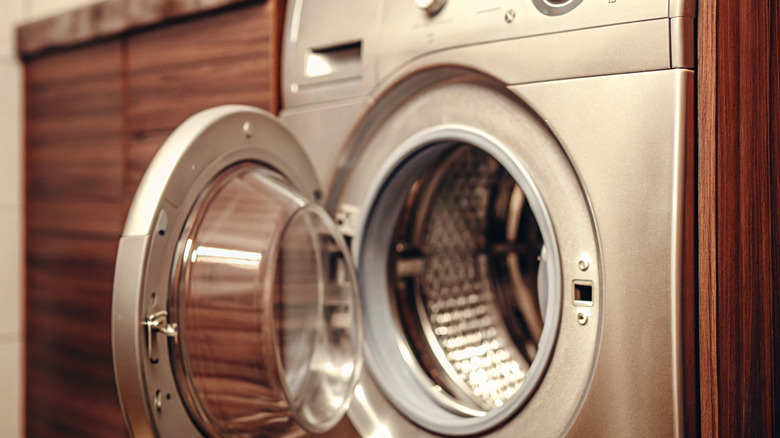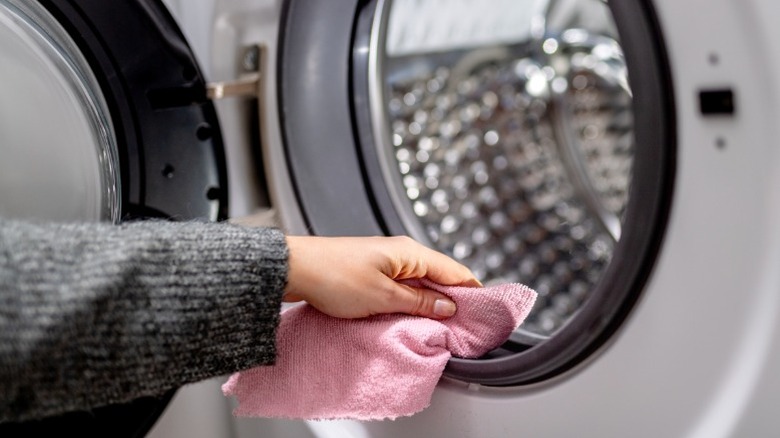The Maintenance Task That Leaves Your Washing Machine Smelling Good After Every Wash
When you open your washing machine door, are you greeted by a damp, musty odor instead of the smell of clean laundry? There's one habit that can prevent that stinky smell from developing in your front-loader — wiping down the inside drum and the rubber gasket around the door after every wash. Doing this gets rid of the residual moisture and leftover gunk that ends up causing the stink. Body oils, hair, lint, pet fur, and detergent can get trapped inside the rubber seal, a perfect pocket for catching debris. The same design that keeps water in also prevents the buildup and moisture from draining or evaporating naturally once the wash is over. In front-load washers, the airtight seal maintains a moist environment that mildew and odor-causing bacteria love.
This damp, dark, and microbe-rich environment creates the awful odor some might describe as smelling like sewage or rotten eggs. This is often a sign of sulfur-releasing bacteria. While running monthly cleaning cycles will help limit the issue, simply wiping down the machine after removing the wet laundry gets rid of the moisture before it can become a problem. Developing this habit can be a key part of keeping your washing machine sparkling clean and preventing the musty smell from developing and transferring to your clean clothes.
How to clean your washer drum and seal for a fresher machine
Drying your washing machine after each use takes no time at all. After you pull your clothes from the washer, use a clean microfiber cloth to wipe the drum and glass door, getting rid of any moisture still on the surface. Next, pull back the folds of the seal, especially the bottom where the water pools, and wipe away any water and bits of lint or hair. Don't overlook the inner part where the gasket meets the drum, since that's where debris often collects. Wipe the cloth all the way around this area.
If your machine has mold growth, it will need a deep clean. For a moldy gasket, soak a cloth in a solution of ¾ cup of bleach and 1 gallon of warm water. Tuck the rag into the folds where the mold is. Let it sit for about five minutes, and then wipe and rinse. Repeat for stubborn areas until the mold is gone. As an alternative, you can use a mixture of equal parts water and white vinegar, a clever cleaning tool to keep your washer and dryer in tip-top shape without the toxic chemicals. Just be careful to never mix bleach and vinegar, since this creates potentially hazardous chlorine gas.
For a dirty detergent drawer, remove the dispenser, soak it in hot water or a vinegar solution, and scrub away any soap scum or gunk with a brush. Finally, you should consider leaving the washing machine door ajar and opening the detergent drawer between loads to allow air to circulate and dry out any remaining moisture. This post-wash habit can lengthen the life of the machine by eliminating potential damage from constant moisture and prevents blockages in drain lines from gunk and debris.

